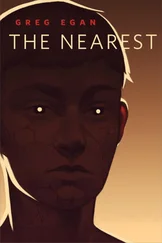Thanks to John Baez, Jennifer Brehl, Caroline Oakley, Anthony Cheetham, John Douglas, Simon Spanton, Oisín Murphy-Lawless, Devi Pillai, Peter Robinson, Russell Galen, Carol Jackson, Emma Bailey, Diana Mackay, Philip Patterson, Christodoulos Litharis, Nicola Fantini, Giancarlo Carlotti, Albert Solé, Petr Kotrle, Makoto Yamagishi, Florin Pîtea, and Mihai-Dan Pavelescu.

In the beginning was a graph, more like diamond than graphite. Every node in this graph was tetravalent: connected by four edges to four other nodes. By a count of edges, the shortest path from any node back to itself was a loop six edges long. Every node belonged to twenty-four such loops, as well as forty-eight loops eight edges long, and four hundred and eighty that were ten edges long. The edges had no length or shape, the nodes no position; the graph consisted only of the fact that some nodes were connected to others. This pattern of connections, repeated endlessly, was all there was.
In the beginning ? Waking more fully, Cass corrected herself: that was the version she remembered from childhood, but these days she preferred to be more cautious. The Sarumpaet rules let you trace the history of the universe back to the vicnity of the Diamond Graph, and everything you could ask for in a Big Bang was there: low entropy, particle creation, rapidly expanding space. Whether it made sense to follow these signposts all the way back, though, was another question.
Cass let the graph’s honeycomb pattern linger in the darkness of her skull. Having relinquished her child’s-eye view of the world, she was unable to decide which epoch of her life she actually inhabited. It was one of the minor perils of longevity: waking could be like to trying to find your way home on a street with ten thousand houses, all of which had once been your own. That the clues on the other side of her eyelids might be more enlightening was beside the point; she had to follow the internal logic of her memories back into the present before she could jolt herself awake.
The Sarumpaet rules assigned a quantum amplitude to the possibility of any one graph being followed by another. Among other things, the rules predicted that if a graph contained a loop consisting of three trivalent nodes alternating with three pentavalent ones, its most likely successors would share the same pattern, but it would be shifted to an adjoining set of nodes. A loop like this was known as a photon. The rules predicted that the photon would move. (Which way? All directions were equally likely. To aim the photon took more work, superimposing a swarm of different versions that would interfere and cancel each other out when they traveled in all but one favored direction.)

Other patterns could propagate in a similar fashion, and their symmetries and interactions matched up perfectly with the known fundamental particles. Every graph was still just a graph, a collection of nodes and their mutual connections, but the flaws in the diamond took on a life of their own.
The current state of the universe was a long way from the Diamond Graph. Even a patch of near-vacuum in the middle of interstellar space owed its near-Euclidean geometry to the fact that it was an elaborate superposition of a multitude of graphs, each one riddled with virtual particles. And while an ideal vacuum, in all its complexity, was a known quantity, most real space departed from that ideal in an uncontrollable manner: shot through with cosmic radiation, molecular contaminants, neutrinos, and the endless faint ripple of gravitational waves.
So Cass had traveled to Mimosa Station, half a light-year from the blue subgiant for which it was named, three hundred and seventy light-years from Earth. Here, Rainzi and his colleagues had built a shield against the noise.
Cass opened her eyes. Lifting her head to peer through a portal, still strapped to the bed at the waist, she could just make out the Quietener: a blue glint reflecting off the hull a million kilometers away. Mimosa Station had so little room to spare that she’d had to settle for a body two millimeters high, which rendered her vision less acute than usual. The combination of weightlessness, vacuum, and insectile dimensions did make her feel pleasantly robust, though: her mass had shrunk a thousand times more than the cross sections of her muscles and tendons, so the pressures and strains involved in any collision were feather-light. Even if she charged straight into a ceramic wall, it felt like being stopped by a barricade of petals.
It was a pity the same magical resilience couldn’t apply to her encounters with less tangible obstacles. She’d left Earth with no guarantee that the Mimosans would see any merit in her proposal, but it was only in the last few days that she’d begun to face up to the possibility of a bruising rejection. She could have presented her entire case from home, stoically accepting a sevenhundred-and-forty-year delay between each stage of the argument. Or she could have sent a Surrogate, well briefed but nonsentient, to plead on her behalf. But she’d succumbed to a mixture of impatience and a sense of proprietorship, and transmitted herself blind.
Now the verdict was less than two hours away.
She unstrapped herself and drifted away from the bed. She didn’t need to wash, or purge herself of wastes. From the moment she’d arrived, as a stream of ultraviolet pulses with a header requesting embodiment on almost any terms, the Mimosans had been polite and accommodating; Cass had been careful not to abuse their hospitality by pleading for frivolous luxuries. A self-contained body and a safe place to sleep were the only things she really needed in order to feel like herself. Being hermetically sealed against the vacuum and feeding on nothing but light took some getting used to, but so did the customs and climate of any unfamiliar region back on Earth. Demanding the right to eat and excrete, here, would have been as crass as insisting on slavish recreations of her favorite childhood meals, while a guest at some terrestrial facility.
A circular tunnel, slightly wider than her height, connected her spartan quarters to a chamber where she could interact with the software she’d brought from Earth, and through it the Mimosans themselves. She bounced down the borehole, slapping the wall with her hands and feet, bumping her head and elbows deliberately.
As she entered the chamber, she seemed to emerge from the mouth of a burrow to float above a lush, wide meadow beneath a cloud-dappled sky. The illusion was purely audiovisual — the sounds encoded in radio waves — but with no weight to hold her against the ceramic hidden beneath the meadow, the force of detail was eerily compelling. It only took a few blades of grass and some chirping insects to make her half-believe that she could smell the late-summer air.
Would it really have been an act of self-betrayal, if this landscape had stretched all the way inside her — right down to the sensations of inhabiting her old, two-meter body, gorging on a breakfast of fruit and oats after swimming across Chalmers Lake? If she could drift in and out of this soothing work of art without losing her grip on reality, why couldn’t she take the process a few steps further?
She pushed the argument aside, though she was glad that it never stopped nagging at her. When the means existed to transform yourself, instantly and effortlessly, into anything at all, the only way to maintain an identity was to draw your own boundaries. But once you lost the urge to keep on asking whether or not you’d drawn them in the right place, you might as well have been born Homo sapiens , with no real choices at all.
Читать дальше
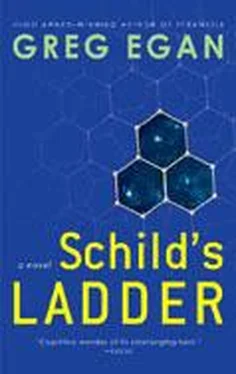


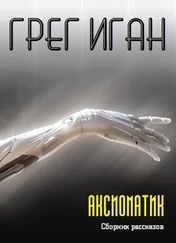
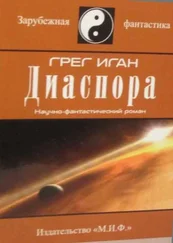
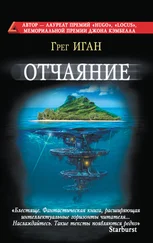
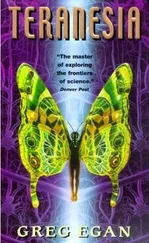



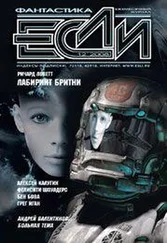
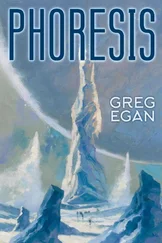
![Грег Иган - Рассказы [компиляция]](/books/419837/greg-igan-rasskazy-kompilyaciya-thumb.webp)
